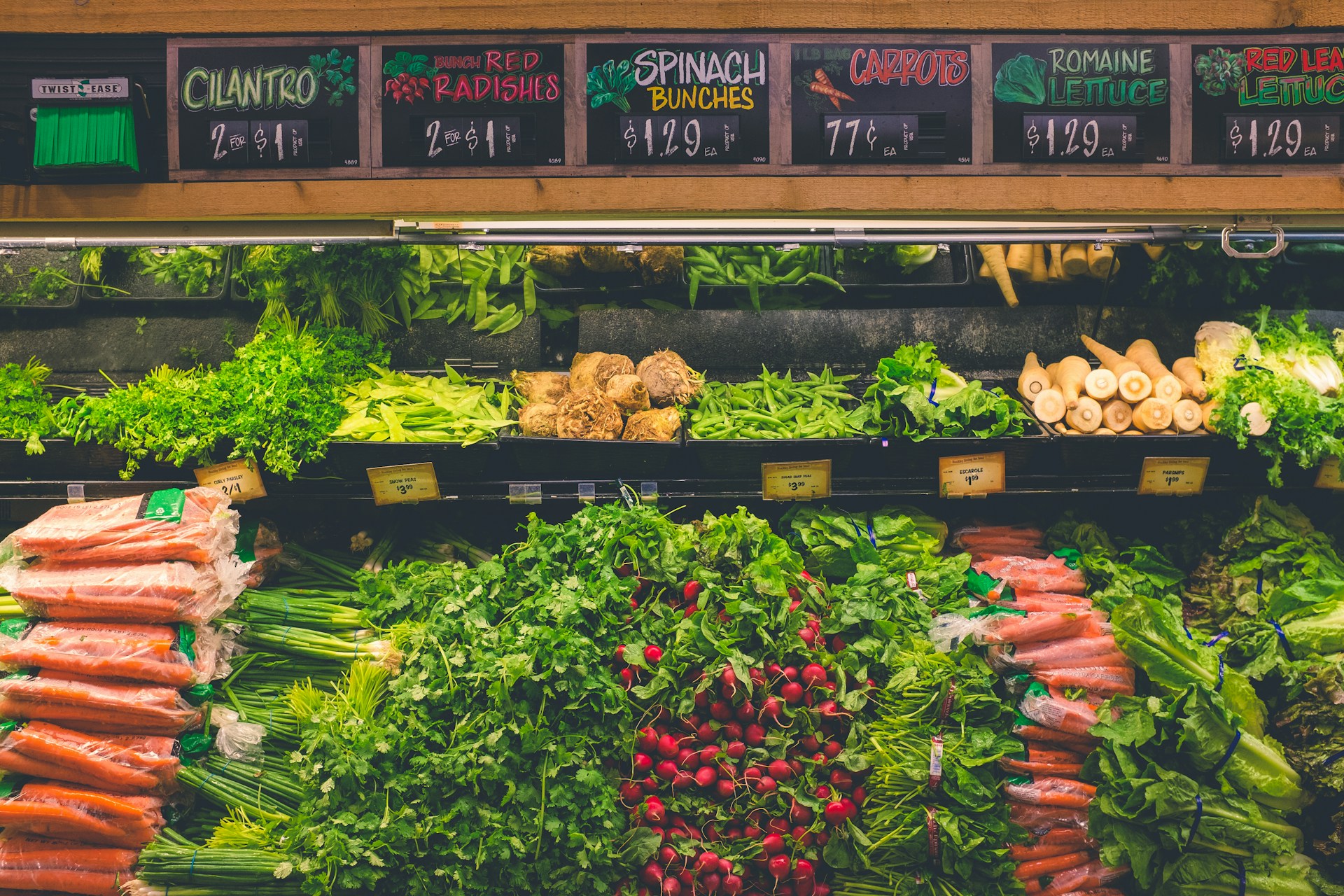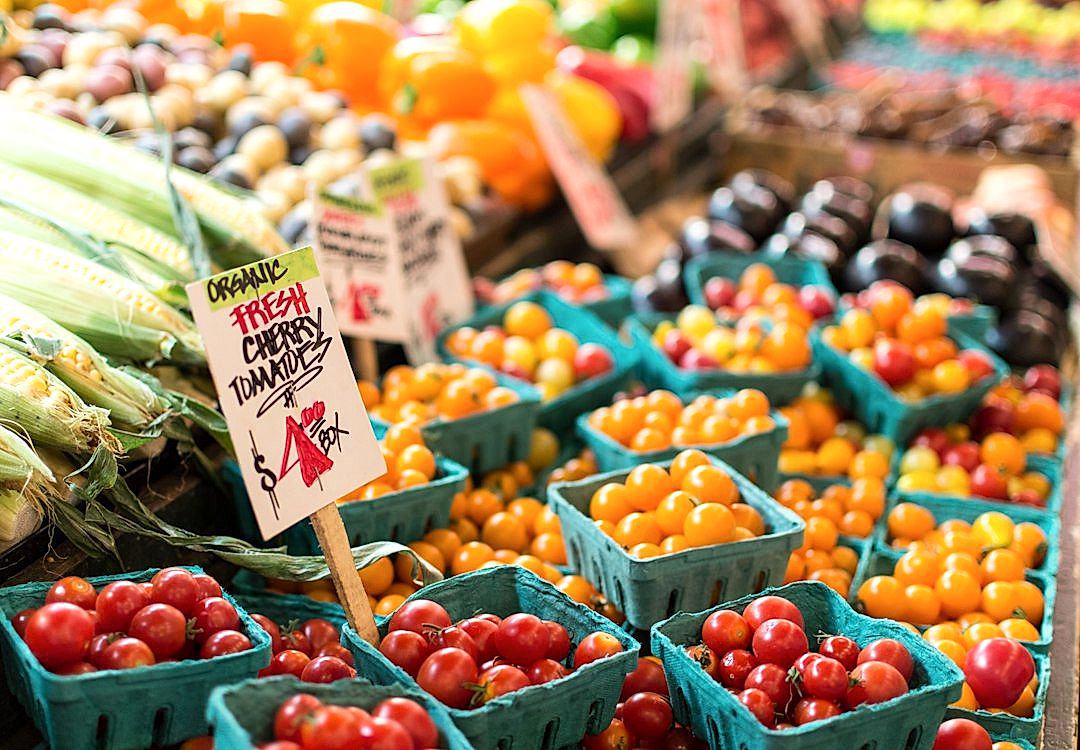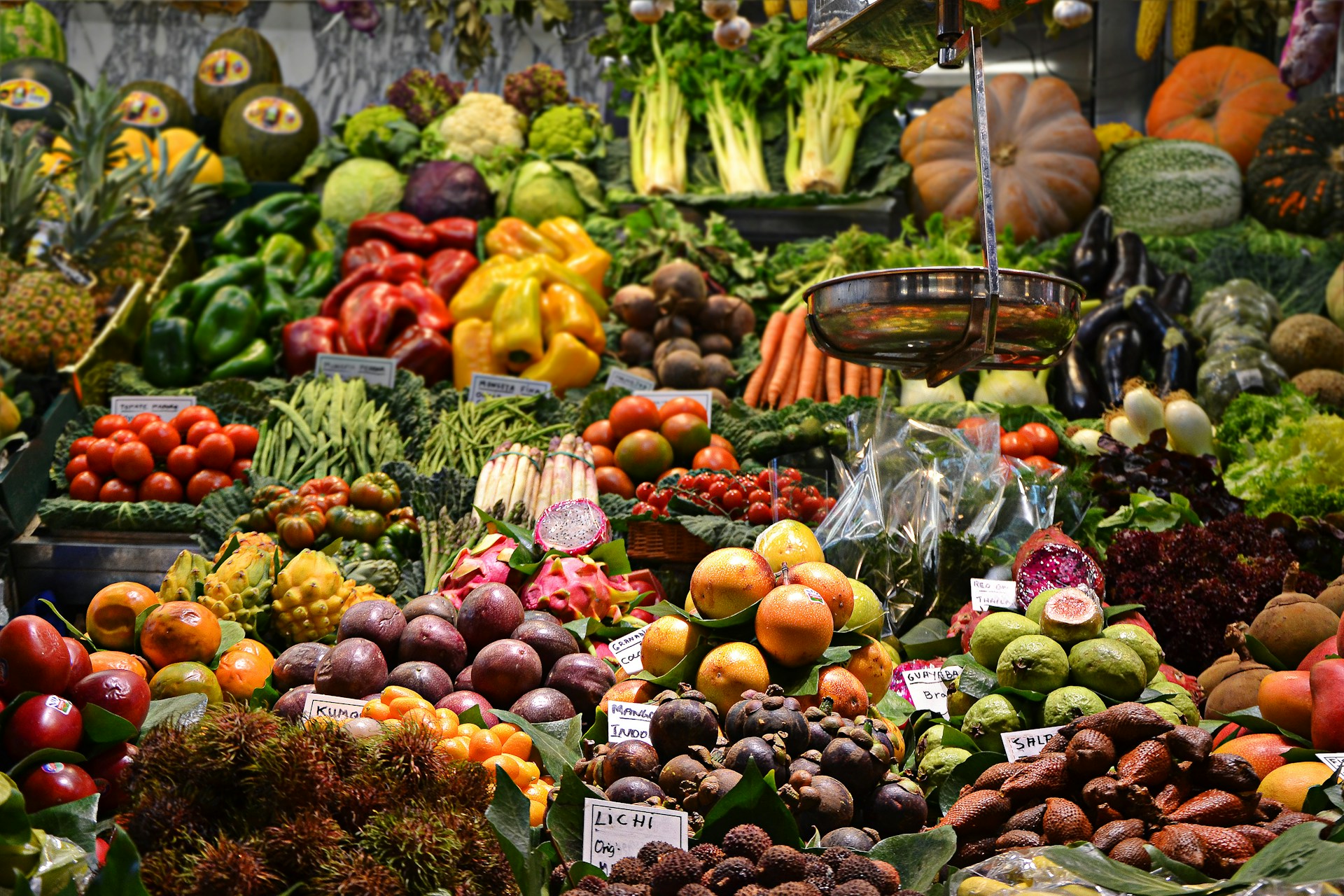In the world of fresh food logistics, maintaining the efficacy of the cold chain is paramount.
It involves successfully handling, storing, and distributing perishable products under specific temperature conditions, from production to the point of consumption.
A seemingly minor temperature fluctuation can significantly affect product quality, nutritive value and lead to significant food loss.
Adherence to industry best practices can ensure optimal operations, minimize spoilage, and extend the longevity of produce.
This result infers substantial cost benefits but more importantly, a commitment to sustaining a healthier and safer global food supply.
In the following article, we shall elaborate on essential strategies to fortify and maximize cold chain efficiency specific to produce distribution.
Contents
- Best Practices For Cold Chain In Produce Distribution
- 1. Maintain Correct Temperature during Storage and Transportation
- 2. Regular inspection of cold chain equipment.
- 3. Training staff in cold chain management
- 4. Use temperature monitors during transport
- 5. Follow hygiene standards in cold chain.
- 6. Regularly Maintain and Upgrade Refrigerated Vehicles
- 7. Plan Delivery Routes for Maximum Efficiency
- 8. Rapid cooling of fresh produce post-harvest.
- 9. Use of Insulated Packaging during Transit
- 10. Immediate Unloading upon Arrival to Prevent Spoilage
- The Bottom Line
Best Practices For Cold Chain In Produce Distribution
1. Maintain Correct Temperature during Storage and Transportation
The first and foremost step in maintaining the integrity of the cold chain in produce distribution is to ensure the right temperature is maintained during both storage and transportation.
The temperature of storage and transportation plays a vital role in increasing or decreasing the shelf-life and quality of the produce.
Maintaining the correct temperature becomes even more significant when you are dealing with perishable items like vegetables, fruits, dairy products, etc.
Due to their biodegradable nature, these items require specific temperatures to slow down the decomposition process and maintain their freshness for a longer period.
Both storage and transportation temperatures can vary from product to product.
For instance, bananas are usually stored and transported at a temperature between 13 to 14 degrees Celsius, while apples require a colder temperature between 0 to 4 degrees Celsius.
Therefore, it is paramount to have a deep understanding of the specific temperature requirements of each fruit, vegetable or any other perishable item in the chain.
This will help in maintaining the quality, taste, texture, and the overall value of the produce.
Moreover, abrupt temperature changes should be avoided as they can impose thermal shocks on the produce, thereby leading to faster degradation.
Stable, consistent temperatures ensure that the produce maintains its quality throughout its journey from the fields to the consumer’s table.
When it comes to transport, refrigerated vehicles are used to keep the produce in the required temperature range.
The precision in temperature control during transportation is accomplished using state-of-the-art refrigeration units, effective insulation, and well-trained drivers who understand the importance of maintaining the right temperature.
At storage facilities, it is important that the environment is humidity controlled as it helps in reducing moisture loss from the produce.
Note, the European Food Safety Authority (EFSA) provides clear guidelines on the optimum temperature and humidity conditions for different types of produce.
Lastly, using temperature monitors can be a great tool in ensuring the required temperature is maintained throughout the cold chain.
These devices can provide real-time data to spot any deviations and take immediate corrective actions to maintain the temperature within the specified range.
Thus, maintaining correct temperature throughout storage and transport forms the base for managing a cold chain efficiently.
2. Regular inspection of cold chain equipment.
The importance of regular inspection of cold chain equipment cannot be overstated in the produce distribution industry.
This process is vital for ensuring the integrity of the cold chain and mitigating the risks associated with its potential failure.
Temperature controlled equipment such as refrigerated trucks, cold storage facilities, and other equipment are critical components of the cold chain that need routine inspections to ensure their optimal performance.
The moment any piece of cold chain equipment is not properly functioning, it can jeopardize the entire distribution process, risking product quality and food safety.
Having a rigorous schedule for routine inspections allows for any potential defects or malfunctions to be discovered in time and rectified before a catastrophic failure occurs.
The frequency of these inspections can vary depending on the equipment, its usage, and the volume of produce being transported or stored.
In some cases, daily inspections might be necessary, while in others, weekly or monthly checks will suffice.
However, the operant principle is to err on the side of caution and conduct inspections as frequently as possible.
Thorough inspections should include checking the temperature settings, monitoring the thermostat performance, examining the equipment for any signs of physical damage, and ensuring that the seals are intact.
In addition to immediate checks, considering the historical performance data of the equipment can also be extremely helpful in predicting and preventing future failures.
This is where preventative maintenance comes into play. It involves taking a proactive approach by regularly replacing worn-out parts, applying necessary upgrades, and correcting minor issues before they escalate into more serious problems.
It’s important to note that performing regular inspections and preventative maintenance requires expertise in the functioning and operation of cold chain equipment.
Therefore, it would be prudent for businesses to have their inspections conducted by qualified professionals who understand the intricacies of these machines.
Regular inspections are a cost-effective strategy in the long run as they prevent the possibility of significant losses resulting from equipment failure.
At the end of the day, the goal is to maintain a robust and reliable cold chain that can ensure the safe and timely distribution of fresh produce.
This can only be achieved through careful, regular inspections and vigilant maintenance of the cold chain equipment – it’s a practice that businesses should adopt as part of their standard operating procedures.
3. Training staff in cold chain management
Properly training the staff plays a crucial role in the efficient and successful management of the cold chain in produce distribution.
Employees should not only understand the basics of their job but should also be knowledgeable about the importance of temperature control in maintaining the quality of the produce.
Every individual responsible for handling the produce during its journey from farm to supermarket needs to be aware of the best practices in cold chain management.
Training shouldn’t just happen once, but should be ongoing and regular to keep all staff up-to-date with their critical role in preserving the freshness and quality of produce.
Furthermore, providing comprehensive training on the use of refrigeration equipment, temperature monitors and insulated packaging can significantly improve the proficiency of the operations and extend the shelf-life of produce.
In-house training programs designed specifically for the company’s cold chain process are a worthy investment, ensuring all staff members are aware of the necessary precautions and procedures.
Apart from the technical aspects, training should also be provided on the importance of strong cooperation and communication among the team.
Instant reporting of any issues or breakdowns in the cold chain can help management to take immediate corrective actions, preventing potential spoilage or quality loss.
Moreover, employees must be trained on the hygiene standards that need to be maintained during distribution to prevent contamination of the produce.
Efficient cold chain management is not just about having the right equipment, but about having a workforce that understands and prioritizes the care of produce.
A well-trained staff can take quick decisions in situations of unexpected delay or sudden break in the cold chain.
They can then act effectively to minimize the damage and ensure the produce reaches the end consumer as fresh as possible.
Moreover, regular training programs lead to improved employee confidence and efficiency, thereby improving overall productivity.
With proper training, staff members are not just workers, but custodians of the produce’s quality and freshness throughout its journey in the cold chain.
Training, therefore, allows for streamlining of processes, fewer mistakes, and most importantly, consistent delivery of high-quality fresh produce.
As such, staff training should be a key component of any company’s cold chain management strategy, ultimately contributing to the success of the business.
4. Use temperature monitors during transport
One of the best practices in the cold chain in produce distribution is the use of temperature monitors during transportation.
These devices play an integral role in ensuring the quality and freshness of products in transit.
They provide a consistent track of the temperature, ensuring that it remains within the desired range.
Temperature monitors come in a variety of types, including single-use monitors and multi-use monitors.
In most cases, these monitors are attached directly to the delivery vehicle or placed inside packaging to directly monitor the temperature of the product.
Regardless of the type used, the core objective is to guarantee the maintenance of the correct temperature.
Equally important is the data recording function of temperature monitors, which can be crucial in identifying problems and making improvements.
For instance, whenever there’s a temperature spike, it gets recorded, and this information can be used later to ascertain the cause of the problem and implement corrective measures.
Regular use of temperature monitors helps to prevent products from deteriorating during transport, therefore maintaining the quality desired by the consumers.
It ensures that the produce is transported under the most optimal conditions, thereby controlling the product’s shelf life, and minimizing waste.
Furthermore, using temperature monitors can increase efficiency in the distribution process by minimizing instances of rejected deliveries due to poor quality.
This not only has a positive effect on the company’s reputation, but also on profits.
However, for temperature monitoring to be effective, it needs to be coupled with other practices such as regular inspection of cold chain equipment and staff training.
It’s also vital to ensure that the temperature monitors are properly calibrated and maintained to provide accurate readings.
In Summary, the use of temperature monitoring during transport is an essential practice in maintaining the integrity of the cold chain within the produce distribution business.
5. Follow hygiene standards in cold chain.
When handling produce distribution in the cold chain, one crucial approach is to strictly adhere to the hygiene standards.
High sanitary standards minimize the risk of contamination, which is a common problem in the handling of fresh produce.
Produce is vulnerable to microbial contamination from various sources like air, equipment, and handling personnel.
Regular sanitation and cleaning of cold storage areas and transport vehicles are critical.
Sanitization removes residues that may contribute to the spread of microorganisms.
This control measure also maintains the freshness of the produce and extends its shelf life, thus reducing food waste and enhancing profitability.
Employees involved in the cold chain should be trained on hygiene best practices, including frequent hand washing and use of personal protective equipment (PPE).
It is important to ensure that staff members are healthy and not carrying any infectious diseases.
Equipment used in the cold chain should be made of materials that can be cleaned and sanitized easily.
These materials should also be resistant to damage, to prevent the creation of crevices that can harbor harmful bacteria.
Special attention should be paid to the hygiene of packing materials, ensuring they are clean and safe.
Packing materials play a vital role as they come into direct contact with the produce.
Hygiene measures should be constantly monitored and reevaluated to ensure they remain effective and up to date.
A well-maintained hygiene standard in the cold chain reduces the possibility of product recalls resulting from food safety issues.
Adhering to hygiene standards in the cold chain is not just about compliance with regulations, but it’s about taking responsibility for consumer safety and health.
Therefore, maintaining high hygiene standards is not only beneficial for the business but also for the consumers and the environment.
6. Regularly Maintain and Upgrade Refrigerated Vehicles
One of the critical parts of the cold chain in produce distribution is the use of refrigerated vehicles.
These vehicles play a vital role in the proper storage and transportation of perishable goods.
They ensure that products move from the source to the destination while maintaining the required temperature levels.
Therefore, regular maintenance and upgrade of these refrigerated vehicles are key factors in such operations.
Maintenance of refrigerated vehicles is not just about ensuring they remain functional, but also about making certain they operate at the highest degree of efficiency.
The maintenance process involves different aspects, starting from the check-up of the cooling system to the overall condition of the vehicle.
Proper inspection and replacement of parts like condensers, compression systems, and temperature control devices can significantly increase the efficiency of the vehicle.
Moreover, regular maintenance checks also involve evaluating the insulation systems of the vehicles.
Good insulation is vital in preventing temperature variance, which could lead to product spoilage.
Additionally, apart from maintenance, there is also a need for periodic upgrading of these vehicles.
As technology advances, new features and systems are introduced that enhance the performance of refrigerated vehicles.
These upgrades can range from advancements in insulation technology to more efficient cooling systems.
Upgrading can also involve adopting new temperature monitoring and control systems that provide real-time updates about the internal temperature of the vehicles.
By implementing such advancements, businesses can ensure maximum efficiency in their cold chain operations.
Therefore, regular maintenance and upgrading of refrigerated vehicles don’t just enhance their functionality but also contribute significantly to the overall efficiency of the cold chain in produce distribution.
7. Plan Delivery Routes for Maximum Efficiency
Planning delivery routes is a crucial aspect of cold chain in produce distribution.
This process involves understanding the most efficient routes to take that not only minimize the time taken to deliver but also ensure the quality of the produce is maintained.
GPS technology and advanced mapping software have made it easier to determine the most direct and cost-effective routes in produce distribution.
By mapping out the fastest and safest routes, fresh produce can be delivered swiftly and efficiently, lowering the risk of spoilage during long hours of transit.
Yet, it’s not only about choosing the shortest path, it’s also about considering peak traffic times, road conditions, and weather patterns.
Through efficient route planning, delivery teams can assure the freshness and quality of the produce, heightening the overall effectiveness of the cold chain.
Cold chain management systems often integrate route planning tools, which help save time and resources.
These systems can also be adjusted in real-time to take into account any changes in the delivery requirements or emergency situations, like a sudden breakdown of the refrigerated vehicle.
Effective routes planning does not only improve delivery time but also reduces fuel consumption and CO2 emissions.
Reducing the environmental impact of cold chain distribution is an important factor for companies looking to demonstrate their commitment to sustainability.
Route planning also takes into account the realities of product handling, such as the need for specialized equipment for loading and unloading.
This process helps to minimize risks associated with handling fragile or perishable items like fruits and vegetables.
Several factors must be weighed to secure the right balance between speed, safety, and efficiency in the delivery of fresh produce.
But, with careful planning, drivers can adhere to schedule and ensure the condition and safety of the produce on delivery.
Overall, efficient routing, as part of cold chain management, is a strategy that optimizes both time and resource utilization in fresh produce distribution.
It’s a critical component that directly affects the success of the entire supply chain.
8. Rapid cooling of fresh produce post-harvest.
Rapid cooling of fresh produce immediately after harvest is vital for conserving the quality, freshness and extending the shelf life of fruits and vegetables.
This technique is known as pre-cooling or field heat removal and forms an integral part of an effective cold chain management system.
Pre-cooling helps reduce the field heat significantly which is a residual heat present in fresh produce even after harvest due to respiration and other metabolic activity.
The main objectives behind pre-cooling are to minimise water loss, slow down degradation, and curtail microbial growth.
There are traditional as well as advanced methods to perform the rapid cooling process including room cooling, forced-air cooling, hydrocooling, and vacuum cooling.
Room cooling is the simplest method where fresh produce is placed in a cold-stored room till it achieves the desired temperature.
However, this method might not be highly efficient for large volumes due to poor air circulation.
Forced-air cooling involves the use of fans to circulate cold air around the produce that enhances the rate of heat removal.
With hydrocooling, water is used as a medium to remove field heat due to water’s high heat-carrying capacity as it is virtually 25 times greater than air.
Vacuum cooling works faster but is relatively expensive compared to other methods, it is mainly used for leafy vegetables and mushrooms whose high surface area allows for rapid evaporation.
Proper implementation of rapid cooling methods not only ensures good quality produce for the end consumers but also significantly cuts down food wastage due to spoilage.
The choice of pre-cooling methods mainly depends on the type of produce, its volume, and the available resources.
Regardless of the method used, it is very important to ensure that the required temperature is reached as quickly as possible and is maintained properly without fluctuations.
Monitoring temperature constantly throughout the process helps ensure consistent quality management.
In addition to this, all handling operations before and after pre-cooling must be carried out under hygienic conditions to avoid contamination and cross-infection attempts.
The speed of the cooling process directly impacts the quality of the end product. Hence, employing an efficient cooling system and maintaining it properly will contribute significantly towards maximising product quality and shelf-life.
9. Use of Insulated Packaging during Transit
The process of distributing produce requires the use of insulated packaging during transit to maintain temperature and quality.
Insulated packaging material significantly reduces the transfer of heat between the product and the external environment.
These types of packaging usually contain multi-layer designs or special materials that effectively trap cold air inside and prevent heat from entering.
Many cold chain companies use EPS (Expanded Polystyrene) materials, which have excellent insulation properties and are lightweight.
Investing in thermal blankets and liners can significantly enhance insulation to provide more robust temperature protection to the fresh produce.
Insulated packaging can be crucial in situations where refrigerated transport is not available or too expensive.
These materials can also provide a cost-effective way for small and medium agri-business enterprises to maintain the cold chain during transport.
Many suppliers offer a variety of shapes and sizes for insulated packaging, facilitating easy transport of diverse produce.
Common designs include insulated pouches, box liners, and larger containers that can accommodate bulk orders.
Another critical consideration is the re-usable nature of insulated packaging, which can prove economically and environmentally sound.
Well-designed insulated packaging can be re-used several times, without a significant decrease in its insulating properties.
This approach is also aligned with the increasing sustainability trend in the cold supply chain sector.
It’s critical, however, to remember that even the best insulated packaging can’t guarantee perfect temperature control throughout transport if it’s not used in conjunction with best storage and handling practises.
Therefore, the use of insulated packaging during transit should be combined with regular temperature checks, proper loading and unloading procedures, and other relevant cold chain management practices.
Ultimately, the use of insulated packaging can significantly enhance the effectiveness of the cold chain in preserving the quality and safety of fresh produce during distribution.
10. Immediate Unloading upon Arrival to Prevent Spoilage
One of key aspects of effective cold chain management in produce distribution is the immediate unloading of products upon arrival at their designated destination.
This practice is crucial to prevent the deterioration or spoilage of perishable items, which are often very sensitive to changes in temperature or prolonged exposure to humid conditions.
Immediate unloading goes beyond just taking the produce out of the vehicle; it encompasses a broader range of actions including proper temperature management, fast track inventory, and most importantly, maintaining the freshness and quality of the produce.
The time taken between the arrival of the shipment and the commencement of the unloading process has a significant impact on the quality and longevity of the produce stored inside.
Exposure to fluctuating temperatures during transit, particularly if a delay occurs during unloading, can escalate the ripening process and lead to premature spoilage of the produce.
Immediate unloading reduces the period that the produce remains in a potentially damaging state of limbo between the controlled temperature of the transportation unit and the refrigerated storage facilities.
As soon as a vehicle arrives, it is imperative that the unloading process begins without delay to ensure that the produce goes straight to a place where its quality can be preserved.
Any lag in this process can risk the entire shipment, leading to heavy losses for suppliers and dissatisfaction among consumers.
Immediate unloading is not just swift in nature; it must also be done methodically to avoid bruising or damaging produce during the process.
It’s essential to have a strategy in place to ensure the smooth flow of operations and minimize the time taken from transportation unit to storage facility.
This strategy also involves the proper organization of storage facilities to ensure quick and effective placement of incoming shipments.
There is a need for well-trained and competent workforce who understands the sensitivity of fresh produce and is able to work efficiently under pressure.
Ultimately, the practice of immediate unloading is not just about speed, it’s about the concert between quick action and careful handling to guarantee the produce’s value is not undermined.
Right technologies and equipment can further streamline this process; lifting aids or conveyor systems can ensure faster product movement without causing any potential harm.
The goal of immediate unloading is to maintain optimal freshness and quality, and for that continuous training, improvement in technologies and strict discipline in operations are quintessential.
The Bottom Line
Maintaining the integrity of the cold chain is crucial for preserving the quality and safety of perishable goods.
This primarily entails maintaining the correct temperature during storage and transportation, inspecting cold chain equipment regularly and making sure staff are adequately trained in efficient cold chain management.
It also involves diligent use of temperature monitors during transport, adherence to hygiene standards, and the regular maintenance and upgrading of refrigerated vehicles.
Implementing these strategies, along with planning efficient delivery routes, using insulated packaging, rapidly cooling fresh produce post-harvest, and unloading goods promptly upon arrival significantly mitigates the risk of spoilage, therefore maintaining optimal quality of goods.




